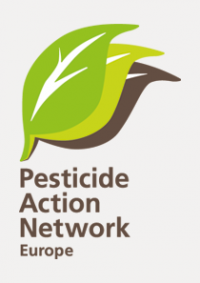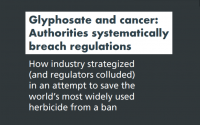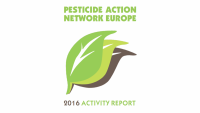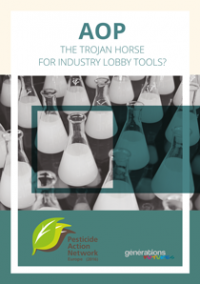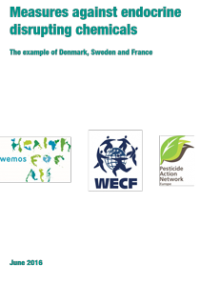Reports
Carcinogens in our food
EU policy provides that people are not exposed to carcinogens1. This means that alleged 'safe levels of exposure' (thresholds) shall not be applied to carcinogens and any exposure to these chemicals prevented. The industry sector has been attacking EU's policy on carcinogens for decades as one of their major lobby campaigns and has been promoting time and again the introduction of 'safe' thresholds.
Flaws in Glyphosate Toxicity Assessment
This report by PAN Germany's Senior Toxicologist, Peter Clausing, argues that in their assessments leading to the possible re-authorisation of Glyphosate, EU authorities failed to acknowledge its toxicity, using highly questionable arguments, and in clear violation of existing guidance documents.
Political decision-makers should not play along with the pesticide industry in this scientifically questionable and, as it seems, interest-driven game. Instead they should be objective in their assessment of glyphosate, ensure that the existing scientific evidence is evaluated correctly, and apply the precautionary principle to guarantee a high level of protection for humans and the environment.
The health of 500 million EU citizens is at stake.
(Please find versions in other languages: Italian; French; Spanish; German)
PAN Europe Annual Activity Report 2016
PAN Europe reports its major policy actions and campaigns in the year 2016.
Endocrine Disrupting Chemicals and Future Generations: Time for the EU to Take Action
Following the growing evidence on the hormone-related adverse health effects in human and wildlife due to exposure to endocrine disrupting chemicals (EDCs), the European Union has taken the initiative to regulate and minimise human and environmental exposure to these substances.
Impact assessment of the criteria for endocrine disrupting pesticides
Criteria could lead to no endocrine disrupting pesticide being banned at all
Mid term review of EU Ombudsman's verdict regarding DG SANTE's pesticide decision-taking methods
PAN Europe in 2013 submitted a complaint to the EU Ombudsman regarding the massive (mis)use of a so-called 'confirmatory data' regime in the approval of pesticides. In case of observed high risks for the environment (birds, mammals, arthropods, fish, etc.) industry was granted the opportunity to submit additional information to show that those high risk do not exist, AFTER approval of their chemical.
Bee Emergency Call : How Member States keep using banned neonicotinoids and how the European Commission does nothing to stop them
February 2017 - Executive Summary
Bees are still under threat from abuse of pesticides. Four pesticides which are highly toxic to bees (including neonicotinoids and fipronil) were banned in 2013. However, the pesticide and seed industry, farmers and many EU Member States are continuing to use these pesticides. This is through a loophole in the Pesticides Regulation that allows for ‘emergency authorisations’.
AOP, the trojan horse for industry lobby tools?
AOP, the adverse outcome pathway, is a very interesting research topic. With AOP scientists try to find out HOW adverse effects develop in the body. AOP could be used in some future for screening of chemicals with unknown toxicity if it matures and shows good predictability of adverse effects.
PAN Europe Annual Report 2015
PAN Europe discusses its major policy actions and campaigns in the year 2015
Measures against endocrine disrupting chemicals
The importance of taking action against endocrine disrupting chemicals
The harmful effects of endocrine disrupting chemicals have been known for years. Now that political leaders are about to take crucial decisions on their regulation, WECF, PAN Europe and Wemos want to create awareness and disseminate knowledge about the risks and regulatory possibilities. We want the Dutch government to implement protective measures both here and in the European context. The measures taken by France, Denmark and Sweden, which we have analysed in this report, are examples of effective policy.
